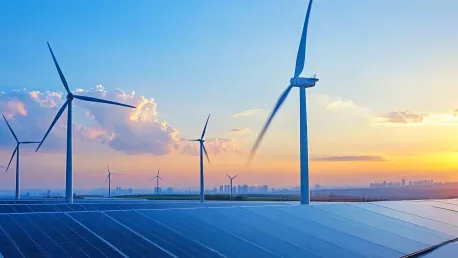Can California Lead the Nation with Its Renewable Energy Strategy?
In a significant stride towards renewable energy, the California Public Utilities Commission (CPUC) recently approved a comprehensive plan directing the Department of Water Resources (DWR) to procure up to 10.6 GW of centralized electrical resources. This decision, rooted in Assembly Bill 1373, marks a pivotal moment for the state, laying down an ambitious blueprint for sustainable energy development. With up to 7.6 GW dedicated to offshore wind, 1 GW allocated to geothermal power, and 2 GW of long-duration energy storage (LDES), including 1 GW with a discharge period of at least 12 hours, the plan underscores California’s unwavering commitment to meeting future energy demands through renewable sources.
California’s proactive approach towards expanding its renewable energy capacity, particularly in offshore wind, is central to its strategy for a sustainable future. This initiative aims to deploy 25 GW of floating offshore wind by 2045, a goal that reflects a long-term vision for the state’s energy infrastructure. Liz Burdock, CEO of Oceantic Network, emphasized that this decisive move showcases California’s dedication not only to renewable energy but also to stabilizing energy costs for ratepayers in the long run. Burdock’s endorsement highlights the economic and environmental benefits that are anticipated from this shift towards sustainable energy alternatives.
Investments in Offshore Wind and Long-Term Benefits
The large-scale investment in offshore wind projects signifies more than just a commitment to renewable energy—it indicates a strategic shift from traditional energy sources to more sustainable ones. Offshore wind, with its long lead times, offers a stable, long-term solution to energy production. The CPUC’s decision aligns with California’s broader objectives of reducing carbon emissions and promoting green energy. Offshore wind projects require significant upfront investments, but the long-term benefits, including reduced reliance on fossil fuels and lowered greenhouse gas emissions, are immense.
California’s focus on offshore wind is part of a holistic strategy to diversify its energy portfolio. The inclusion of 1 GW of geothermal power and 2 GW of long-duration energy storage in the plan ensures that the state’s energy infrastructure will be resilient and reliable. Geothermal power adds a reliable, baseload energy source, while long-duration energy storage systems help balance supply and demand, enhancing grid stability. This diverse mix of renewable energy sources not only supports California’s sustainability goals but also sets a precedent for other states to follow.
Geothermal and Energy Storage: Enhancing Grid Stability
In a big move for renewable energy, the California Public Utilities Commission (CPUC) recently approved a detailed plan for the Department of Water Resources (DWR) to secure up to 10.6 GW of centralized electrical resources. This decision, driven by Assembly Bill 1373, sets an ambitious path for California’s sustainable energy development. The plan includes up to 7.6 GW for offshore wind, 1 GW for geothermal power, and 2 GW for long-duration energy storage (LDES), with 1 GW requiring a discharge period of at least 12 hours. This highlights California’s strong commitment to meeting future energy needs through renewable sources.
California’s forward-thinking strategy to expand its renewable energy, especially offshore wind, is key to its vision for a sustainable future. The state aims to deploy 25 GW of floating offshore wind by 2045, showing a long-term plan for its energy infrastructure. Liz Burdock, CEO of Oceantic Network, noted that this plan underscores California’s dedication to renewable energy and stabilizing energy costs for consumers. Burdock’s support emphasizes the economic and environmental benefits expected from this shift to sustainable energy.









